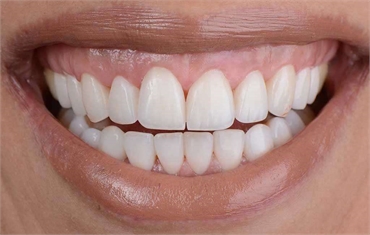Navigating Gum Contouring Discomfort and Recovery Insights

Uneven gums can significantly impact the aesthetics of a smile, prompting individuals to consider gum contouring. Whether it's to enhance appearance or address periodontal concerns, understanding the procedure and its associated discomfort is crucial.
In this article, we'll delve into the details of gum contouring treatment, shedding light on the pain levels, aftercare, and what to expect during recovery.
The Gum Contouring Procedure:
Gum contouring, a precise surgical procedure, takes place in a dental setting under local anesthesia. Employing advanced tools like scalpels, lasers, and radiosurgery, the dentist sculpts and seals the gum tissue to refine its appearance and prevent bleeding.
Additionally, lasers may be used to eliminate potential bacterial havens, safeguarding against infections. Before the surgery, the dentist often outlines the new gum line, providing a visual representation of the alterations. Some cases may also involve bone removal at the tooth root's front to ensure enduring optimal results.
Managing Discomfort:
During the procedure, the local anesthetic ensures you won't experience any pain. Post-surgery, however, some discomfort is to be expected. The extent of this discomfort hinges on the amount of gum tissue removed and the technique employed.
Traditional scalpel-based procedures may necessitate sutures, leading to more pronounced irritation and a longer recovery period. To expedite recuperation and minimize discomfort, many dentists opt for laser-based gum reshaping.
This approach often eliminates the need for cutting or sutures, hastening the healing process. Though some level of swelling and discomfort is inevitable, there are effective ways to mitigate them.
Aftercare Strategies:
Recovery durations for gum contouring can span from a few days to a couple of weeks. To alleviate post-procedure discomfort, dentists often recommend over-the-counter pain relievers like ibuprofen. It's important to steer clear of aspirin-containing medications, as they can thin the blood and potentially lead to bleeding.
In the days following surgery, it's advisable to avoid consuming crunchy or hard foods, which may irritate the sensitive gum tissue. Rest plays a pivotal role in the healing process, so avoiding strenuous activities that heighten blood flow to the area is strongly advised.
If pain, swelling, or bleeding persist beyond the initial recovery phase, it's crucial to promptly consult your dentist for an examination to rule out any potential complications.
Conclusion:
Gum contouring is a transformative procedure that not only enhances the aesthetics of your smile but can also address periodontal concerns. Understanding the pain levels, aftercare steps, and what to expect during recovery can help you navigate the process with confidence.
By adhering to your dentist's recommendations and monitoring your progress, you'll be well on your way to a rejuvenated and healthy smile.

